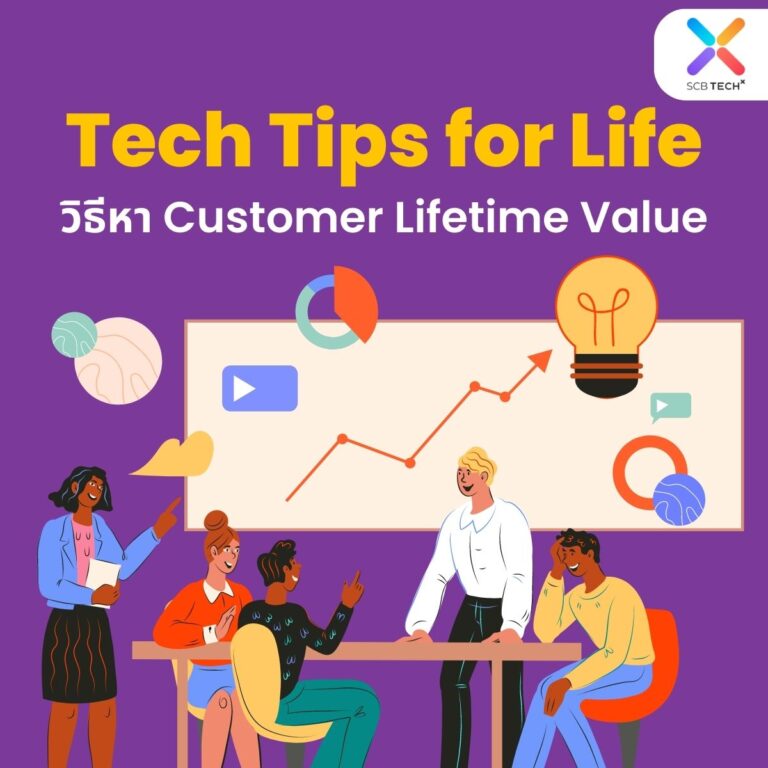
More and more companies are basing their business decisions, strategies, and actions on customer-centric approaches. How much should we spend to acquire customers? Who is more likely to churn? What can be optimized? Today, we invite Khun Rubina, Data Science Business Analyst from SCB TechX to share techniques and how to easily calculate Customer Lifetime Value (CLV) like a professional in 1 minute…. To calculate Customer Lifetime Value (CLV), we can determine the average amount of money expected from paying customers over their lifetime. Various methods, including historical data and prediction models, can be used to calculate CLV. Here is a simplified method:
CLV = 1 / Churn Rate % * Average revenue per customer
– The average revenue per customer is calculated by dividing the total revenue by the number of customers.
– % Churn Rate is the percentage of customers who no longer use the service or buy the product within a certain period.
– For example, let’s consider a subscription-based company with a total monthly revenue of 670,000 THB and 5,000 customers, of which 1,200 have not purchased our services, indicating churn.
Average revenue per customer = 670,000 / 5,000 = 134 THB
1 / Churn Rate % = 1 / (1,200 / 5,000) = 1 / 0.24% = 4.2
CLV = 4.2 * 134 = 558 THB so we should not spend budget more than 558 baht per person.
However, it’s important to note that this method assumes a constant churn rate, which may not reflect the actual customer behavior patterns. Additionally, this simplified method does not consider other variables like gross margin, acquisition cost, retention rate or customer segmentation. Assessing which CLV method aligns best with your business and data is crucial. Finally, the company has now provided comprehensive Data Platform services. If anyone is interested, please send details to contact@scbtechx.io 🙂




